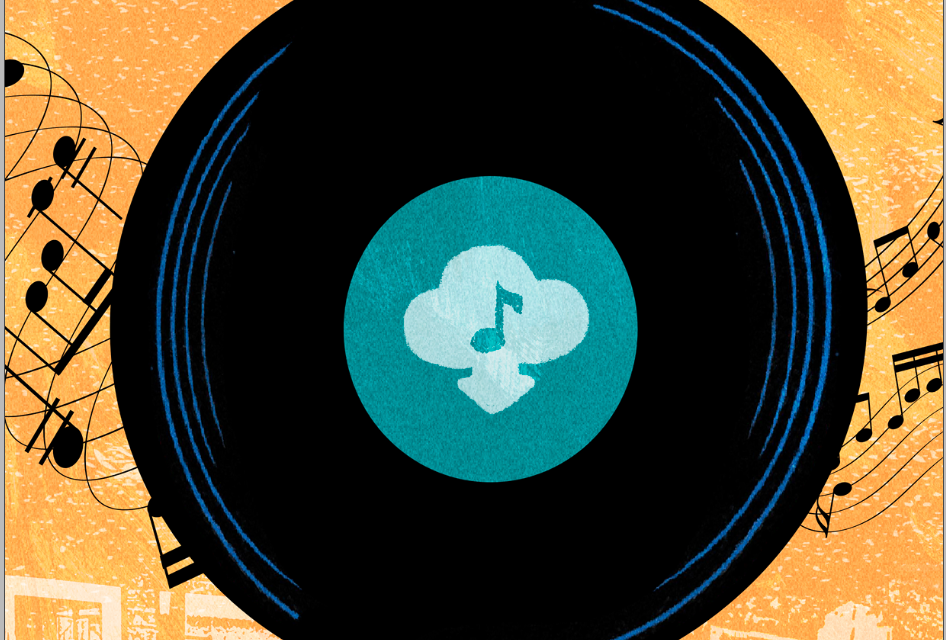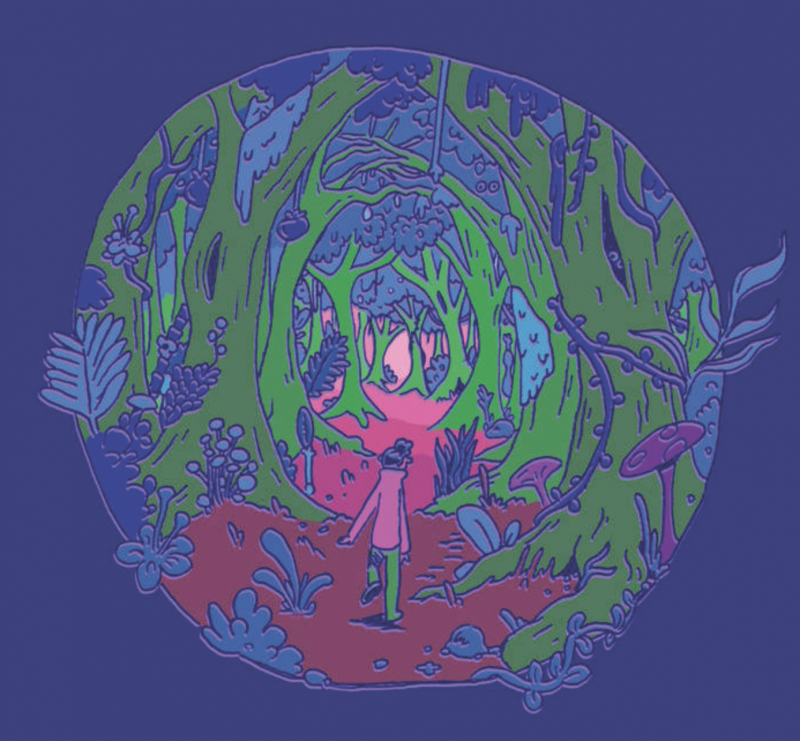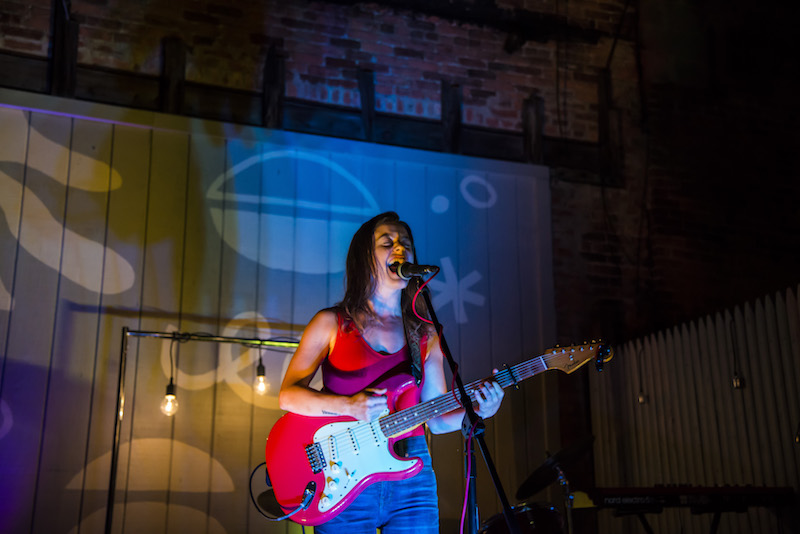If you found a new favorite artist this year, fell in love with a new album, or spent time listening to your personal classics, then you likely did so on a music streaming service.
Although there’s been a well-documented bump in vinyl sales in recent years, the growth of companies like Spotify and Apple Music has been staggering. As of Oct. 2019, Spotify boasts over 248 million monthly users, 113 million of which are paid subscribers. Its closest competitor is Apple Music at 60 million paid subscribers, and then trailing in third with 32 million (as of April 2019) is Amazon Prime. These paid usership numbers have nearly doubled in the last two years alone, and there’s no sign of them plateauing in the foreseeable future.
However, despite the financial gain of the companies themselves, it’s incredibly challenging for artists, specifically independent and local artists, to make more than a pittance from the streams their music receives. Beyond Spotify’s insulting $0.006 to $0.0084 per-stream payout (2,500 streams generates roughly $10, which is usually split among the label, artist, additional songwriters, etc.), there are a litany of ethically debatable factors that a small artist or label must face to compete on the streaming goliath.
Because Spotify and its competitors have become the main way people consume music, it’s incredibly important for artists and labels—both new and old—to adapt their careers to the streaming model. However, the way artists/labels actually navigate the streaming world varies, and is often somewhat complicated. With its thriving scenes of both young and veteran creatives, the Capital Region is a microcosm of the country’s underground music economy, providing a look at streaming through a local lens.
The way most people get their music on streaming services begins with a distributor. Companies like CD Baby, Tunecore and Distrokid act as middlemen between the artist/label and Spotify itself. For either a one-time or annual fee (Distrokid costs $20/year, for reference), an artist can upload their song/album to Distrokid and then the company will handle getting the music onto the streaming platforms. In the early 2000s, CD Baby emerged as a distributor for mp3s, so veteran bands like Super 400 and The Figgs have been familiar with the concept for almost 20 years.

“The choice to upload [our] album seemed to make sense,” Super 400 bassist Lori Friday remembers, thinking back to her band’s fledgling digital presence. “It was so much faster than shipping CDs in the mail. We were aware that streaming took a bit of the magic out of the process—I still would rather hold a physical copy of the record in my hands than access music using ones and zeros. But we were a band on the rise and we wanted our music to use the modern format in order to get it out there.”
According to Mike Gent of The Figgs, performing as a band since the ’80s, they own the rights and masters to 80% of their catalog, so they’ve been carrying out most of their own digital distribution via CD Baby since 2004. However, neither Gent nor his bandmates use streaming services themselves, so their digital promotion is reluctant.
But for Magnetic Eye Records owner Mike Vitali, who has as much concern for his metal roster’s streaming performance as he does their vinyl sales, the distribution process is entirely outsourced to The Orchard, a distribution company owned by Sony.
“Fortunately, and this is an oversimplification,” Vitali says, “We deliver the music and art to our partners and they manage the rest with the streaming platforms. In a way, we have it fairly easy since Sony’s network and coverage of worldwide digital service providers is possibly the most extensive out there.”
The Orchard typically wants the music files submitted months in advance, which is the relative time frame for a vinyl pressing, Vitali says.
“That said, we know for a fact that if we want or need to get something up on the streaming services urgently, it can happen within about 48 hours,” Vitali says. “The simple fact is that distributors know that artists and labels often have extremely chaotic schedules, and it’s to everyone’s benefit if things are handled well in advance, even if the actual nuts and bolts of getting a track up on digital services is only a couple days’ lead time.”
Beyond just getting the music on these platforms, one of the main ways artists actually get streamed—particularly on Spotify—is through playlists. Specifically editorial playlists, which are compiled and promoted by employees at the company. For instance, the playlist “Your Favorite Coffeehouse” frequently updates with new tracks to its 3.7 million subscribers (people who choose to “follow” that playlist). Therefore, it can be a massive opportunity for a young artist to land on one of those playlists and get free exposure from a built-in audience, rather than relying on people searching directly for your music.
That’s what happened to 28-year-old Troy songwriter Arielle O’Keefe, who makes music under the name Girl Blue. Her 2017 song “Fire Under Water” has totaled 2.7 million streams, many of which came from unexpectedly landing on a playlist with millions of followers.
“When I had released [the song] as a single two weeks before the EP dropped, a friend of a friend sent it to her friend, who happened to be the head of pop at Spotify,” O’Keefe says. “Then the day of, I saw the single was on the New Music Friday playlist. I think it had 200,000 hits on Day 1. It was insane. It hit 1 million in a month I think, maybe less? Goes to show that a lot of this industry is about who you know, or in my case who knows you.”
O’Keefe chalks her Spotify success up to luck. Although Vitali uses the Spotify playlist submission tool to try to get his underground metal releases into the ears of those employees, he hasn’t had much luck.
“What we’ve found is that it’s a numbers game,” he says. “From what we understand of what goes on at Spotify, there isn’t really a human personality spending time with every submission to consider whether it should go on a playlist. So no matter how compelling a pitch we might try to write, ultimately the ability to get onto Spotify’s playlists is algorithmic in nature, which means that Spotify’s system is analyzing how well a band is already doing when weighing whether their new song warrants being included and featured on a playlist.”
This data-fication of music can be both disheartening and frustrating for the artists. A main feature of Spotify is its “Fans Also Like” tab, a list on each artist’s profile that recommends musicians that are ostensibly similar in sound and/or scene. Spotify admits, proudly, that this function is compiled algorithmically, which lumps artists together based on listener data rather than artistic similarities. Gent doesn’t feel that the artists The Figgs are compared to in this way accurately represent his music.
“I do know that they use algorithms. . .that lump us in with this same bunch of artists and bands that I think we sound nothing like,” he says. “It’s frustrating having no control over these kind of things.”
But even if you emerge victorious in this highly competitive, data-driven gauntlet and earn a few million streams, is that even enough to sustain a modest career? According to O’Keefe, streaming has, at times, been a great source of passive income, but it’s very inconsistent.
“There was a time when I was making a really decent amount of money off of streaming,” she says. “But the popularity of those songs has evened off, so it’s a much smaller part of my income [now].”
The Figgs are a band with 30 years behind them and a solid fanbase, but Gent says the amount of money they’ve seen from streaming has been “comical.” Vitali feels similarly. “As the label founder and guy who sees all the numbers, streaming platforms have to improve their payments to labels and artists. The money streaming generates, even millions of streams, is pitiful.”
Therefore, despite the dominance of streaming in the musical landscape, most artists make the majority of their money from other outlets. The Figgs still sell CDs and vinyl, Girl Blue makes money from merch, Kenny Hohman and Lori Friday of Super 400 score TV shows for supplementary income, and Magnetic Eye Records subsists on making physical releases that are “practically irresistible.”
Vitali says that Bandcamp, a streaming service of sorts that’s more a digital marketplace for indie artists and labels, has “been instrumental in helping us grow over the years.”
“Our biggest digital and streaming cornerstone is probably Bandcamp,” he says. “Because so many of our customers and fans of our bands come to us to buy physical records but then listen to the digital version in their Bandcamp collections.”
This information about Spotify and Apple Music sounds pretty bleak, and that’s because it is. However, O’Keefe has a surprisingly optimistic way of looking at streaming: as advertising for prospective fans.
“It’s not about streams, it’s about fans,” she says. “Streaming is one model of music consumption, but to me it’s just a piece of the larger picture. I find it very useful as a means of getting people exposed to the music in the quickest and most harmless way possible. Basically everyone has Spotify, so it’s easy to just look me up and listen to what I’ve got, see what I’m about.”
“I do make more consistent money selling merch at shows,” she continues. “But then, how do people end up coming out those shows and supporting? [A] lot of times they heard you on Spotify. So it becomes a good advertisement for what you do.”






Trackbacks/Pingbacks